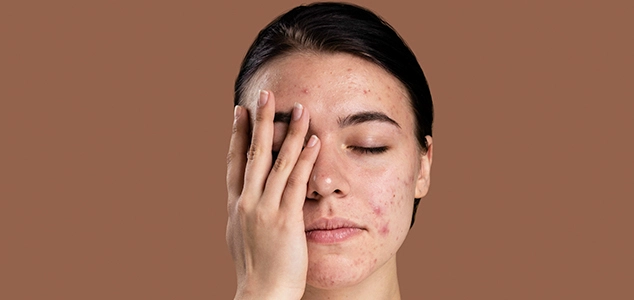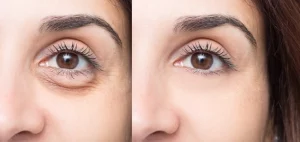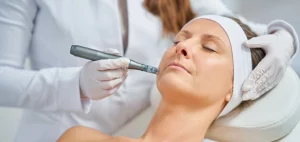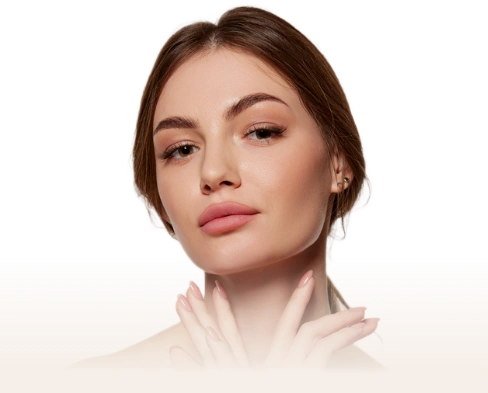Have you ever noticed stubborn, itchy bumps on your skin that just won’t go away, no matter what fungal acne treatment you try? If so, you might be dealing with fungal acne, a common yet often misunderstood skin condition.
Let’s explore everything you need to know about fungal acne, from what it is and its symptoms to the best fungal acne treatment options and home remedies.
What is Fungal Acne (Pityrosporum Folliculitis)?
Fungal acne, scientifically known as Pityrosporum Folliculitis, is a skin condition caused by an overgrowth of yeast called Malassezia (formerly known as Pityrosporum).
Unlike bacterial acne, which is caused by bacteria clogging pores, fungal acne occurs when this yeast infects the hair follicles, leading to inflammation and acne-like breakouts.
This type of acne is often mistaken for regular acne, but its underlying cause requires fungal acne treatment approaches.
Symptoms of Fungal Acne
The symptoms associated with fungal acne include:
Scars
Fungal acne can lead to scarring if left untreated or improperly managed. These scars may appear as shallow pits or raised bumps on the skin, often resulting from prolonged inflammation and scratching. Microneedling is a good way to treat your scars and it’s recommended by many doctors around the world.
Pigmentation
Hyperpigmentation is common with fungal acne, where affected areas become darker due to post-inflammatory pigmentation. This can leave behind dark spots even after the active breakouts have cleared.
- Itching Skin
One of the main symptoms of fungal acne is intense itching. Unlike bacterial acne, which may be more painful, fungal acne tends to cause significant itchiness, prompting individuals to scratch and potentially worsen the condition.
Rash
Fungal acne often presents as a rash of small, uniform bumps that are red or flesh-colored. These bumps typically cluster together and may be mistaken for other types of skin rashes or conditions.
What Causes Fungal Acne?
Several factors contribute to the development of fungal acne:
- Genes: Genetic predisposition plays a role in how likely you are to develop fungal acne. If your family members have experienced it, you might be more prone to it as well.
- Hormones: Hormonal fluctuations, such as those occurring during puberty, menstruation, or pregnancy, can increase oil production in the skin. This excess oil can create an environment where Malassezia yeast thrives.
- Infections: Fungal infections, particularly those involving yeast, can lead to the development of fungal acne. These infections might originate from other parts of the body or from contact with contaminated surfaces.
- Diet: A diet high in sugar and refined carbohydrates can worsen fungal acne. These foods can feed yeast in the body, including Malassezia, potentially leading to overgrowth.
- Stress: High stress levels can weaken the immune system, making the body more susceptible to infections, including fungal infections that cause acne.
Note: If you are unsure about acne this guide about acne treatment would do wonders for your treatment and prevent acne on your body.
What Does Fungal Acne Look Like?
Fungal acne typically appears as small, uniform bumps that are red or skin-colored. These bumps often cluster together, giving the skin a rough texture.
Unlike bacterial acne, which varies in size and can include blackheads and whiteheads, fungal acne lesions are usually similar in size and do not contain pus. They are often found on the chest, back, and upper arms, though fungal acne on face can also appear.
How To Identify Fungal Acne?
Identifying fungal acne involves a few key steps:
- Location of Breakouts: Fungal acne is more likely to appear on the chest, back, and shoulders, though it can also be found on the face. If you have persistent acne in these areas, it might be fungal.
- Appearance: Look for small, uniform bumps that are red or flesh-colored. These bumps often form clusters and may be accompanied by itching.
- Response to Treatment: If traditional acne treatments like benzoyl peroxide or salicylic acid are ineffective, and your acne seems to worsen, it could be a sign of fungal acne.
- Professional Diagnosis: A dermatologist can diagnose fungal acne through a physical examination and, if necessary, by taking a skin sample to identify the presence of Malassezia yeast.
Fungal Acne Treatment
Effective fungal acne treatment involves a combination of topical and oral antifungal medications:
- Topical Antifungals: Creams or gels containing ingredients like ketoconazole, clotrimazole, or terbinafine can help reduce yeast overgrowth on the skin.
- Oral Antifungals: In more severe cases, oral antifungal medications such as fluconazole or itraconazole may be prescribed to address the infection from within.
- Antifungal Shampoos: Shampoos containing selenium sulfide or ketoconazole can be used on the body as well as the scalp to help control yeast growth.
- Maintaining Skin Hygiene: Regularly cleansing the skin with gentle, non-comedogenic products and avoiding heavy, pore-clogging moisturizers can help prevent fungal acne.
- Lifestyle Adjustments: Wearing breathable fabrics, avoiding excessive sweating, and maintaining a balanced diet low in sugar and refined carbs can help manage and prevent fungal acne.
How To Get Rid of Fungal Acne at Home?
For mild cases of fungal acne, home remedies can be effective:
- Tea Tree Oil: Known for its antifungal properties, diluted tea tree oil can be applied to the affected areas to help reduce yeast overgrowth.
- Apple Cider Vinegar: Diluting apple cider vinegar with water and applying it to the skin can help restore the skin’s pH balance and inhibit yeast growth.
- Probiotics: Consuming probiotics, either through supplements or fermented foods like yogurt, can help maintain a healthy balance of gut flora, potentially reducing fungal acne.
- Shower After Sweating: Showering immediately after sweating can help remove yeast and prevent the pores from becoming clogged.
- Avoiding Heavy Skincare Products: Using lightweight, non-comedogenic products can prevent the skin from becoming too oily, reducing the likelihood of fungal acne.
Fungal Acne vs. Hormonal Acne
Understanding the difference between fungal and hormonal acne is crucial for effective hormonal as well as fungal acne treatment:
Fungal Acne
- Caused by yeast (Malassezia).
- Small, uniform bumps.
- Itchy and often found on the chest, back, and upper arms.
- Requires anti-fungal acne treatment.
Hormonal Acne
- Caused by hormonal fluctuations.
- Larger, cystic lesions often around the jawline and chin.
- Can be painful and inflamed.
- Treated with hormonal therapies and traditional acne medications.
Fungal Acne vs. Regular Acne
Regular acne, typically bacterial, differs from fungal acne in several ways:
| Fungal Acne | Regular Acne |
|
|
|
|
|
|
Difference Between Comedones and Fungal Acne
Comedones (blackheads and whiteheads) and fungal acne have distinct characteristics:
| Comedones | Fungal Acne |
|
|
|
|
|
|
Fungal Acne Treatment Frequently Asked Questions
Q1: What is ketoconazole cream used to treat?
Ketoconazole cream is a topical antifungal medication used to treat fungal infections of the skin, including athlete’s foot, jock itch, ringworm, and seborrheic dermatitis. It works by stopping the growth of fungus on the skin.
Q2: How long does benzoyl peroxide take to work?
Benzoyl peroxide typically takes about 4 to 6 weeks of consistent use to show significant improvement in acne. While some may notice initial results within a week, full effects may take longer. It works by reducing bacteria on the skin and unclogging pores.
Q3: What does ketoconazole treat?
Ketoconazole is used to treat various fungal infections, including athlete’s foot, jock itch, ringworm, yeast infections of the skin, and seborrheic dermatitis. It targets the fungus responsible for these infections, inhibiting its growth and relieving symptoms.
Q4: How long does acne take to go away?
The duration for acne to go away varies widely, depending on factors like severity, treatment regimen, and individual skin response. Mild acne may improve within a few weeks, while severe cases might take several months to clear completely with proper treatment.
Q5: How long does it take for spots to go away?
The time it takes for spots to fade depends on factors like skin type, severity of the spot, and treatment used. Generally, it can take anywhere from a few days to several weeks for spots to fade noticeably, especially with the use of treatments like topical retinoids or exfoliants.
Q6: Does Botox help with acne?
Botox primarily targets wrinkles by relaxing muscles, so it’s not specifically designed to treat acne. However, some individuals may experience an improvement in acne indirectly as Botox can reduce oil production and pore size, leading to clearer skin over time.
Q7: How long does it take for antifungal cream to work?
The effectiveness of antifungal cream depends on factors like the severity of the fungal infection and the specific cream used. While some may notice improvement within the first week, it can take several weeks of consistent use for the infection to fully resolve.
Q8: How long does it take to get rid of pimples?
The time it takes to get rid of a pimple varies depending on factors such as size, type of acne, and treatment used. With proper treatment, some pimples may resolve within a few days, while others, particularly cystic acne, may take longer, sometimes up to a week or more to heal completely.

About The Author
Dr. Syra Hanif M.D.
Board Certified Primary Care Physician
Dr. Hanif is the Director of Aesthetic Medicine. She is a board-certified physician in Aesthetic Medicine who specializes in using non-surgical alternatives in order to enhance one's appearance through Botox and fillers.
Read More











